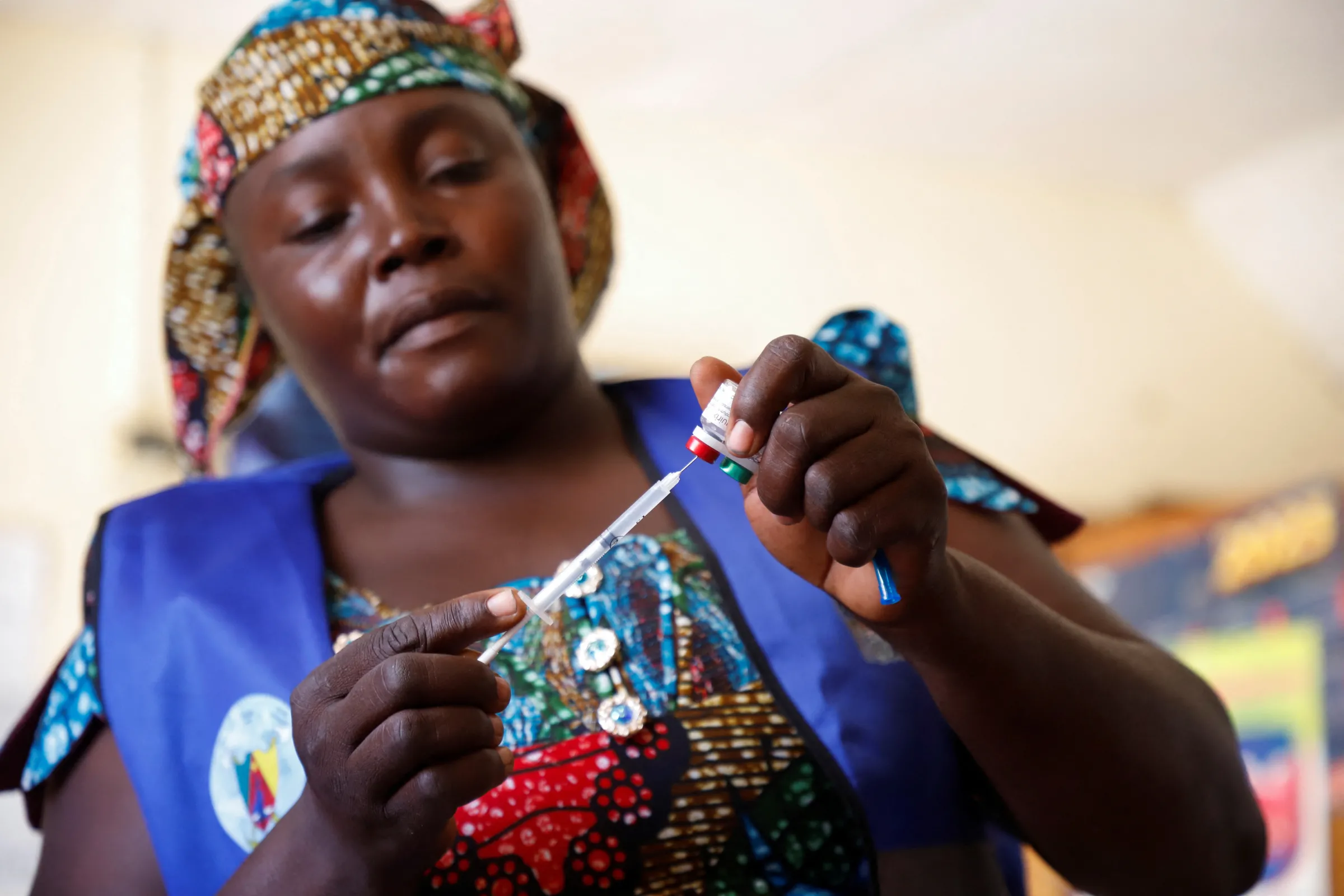US aid cuts create 'perfect storm' for malaria in Africa

A nurse prepares to administer a malaria vaccine to an infant at the health center in Datcheka, Cameroon January 22, 2024. REUTERS/Desire Danga Essigue
What’s the context?
As health agencies call for a revived push to end malaria on World Malaria Day, experts say U.S. aid cuts will lead to more deaths.
- US funding cuts decimate malaria programs in Africa
- Experts warn progress already made could be lost
- 'Perfect storm' of cuts, climate change, resistance
NAIROBI - With clouds gathering over western Kenya ahead of the rainy season, people typically prepare to spray their homes with insecticide to kill the malaria-carrying mosquitoes sure to swarm when the downpours come.
But now, the people of Busia and Migori counties will not have this life-saving protection.
The Indoor Residual Spraying (IRS) campaign was canceled after the United States withdrew crucial funding that supported Amref Health Africa, the charity charged with implementing the scheme.
The disappointed residents of western Kenya, where malaria rates are among the highest in the country, join the ranks of millions of people affected by U.S. President Donald Trump's decision to impose a sweeping freeze on foreign aid this year.
"The IRS is classified as a high-impact intervention in malaria prevention, but we couldn't go ahead with it," said George Githuka, program director of disease control and prevention management at Amref Health Africa.
"The decision from the U.S. government not only stopped the rollout of the IRS in Busia and Migori but has caused major disruptions to other malaria programs."
From Kenya to Mozambique, malaria programs have had funding withdrawn, stalled or disrupted since Trump gutted the U.S. Agency for International Development (USAID), declaring it out of step with his "America First" agenda.
Aside from the immediate effects, experts warn the U.S. funding cuts are likely to reverse progress and could lead to an upsurge in malaria across Africa and beyond.
"History has shown us what happens if we let down our guard against malaria," said Daniel Ngamije, director of the World Health Organization's (WHO) Global Malaria Programme.
"In 1969, the global eradication effort was abandoned, triggering a resurgence in cases and deaths. It took nearly 30 years for world leaders to come together and restore momentum."
Preventable and curable
Malaria, spread when female mosquitoes bite humans, kills nearly 600,000 people each year, with 95% of deaths in Africa, and most of those children aged under five.
Four African countries - Nigeria, Democratic Republic of Congo, Niger and Tanzania - account for just over half of all global deaths of the preventable and curable disease.
While WHO has declared 44 countries malaria-free since 1955, transmission of the deadly disease still occurs in 83 countries.
In 2023, there were an estimated 263 million new cases - up from 252 million the year before.
Today, an array of tools exist to fight malaria: spraying with insecticide, the distribution of bed nets, antimalarial drugs and two vaccines for children that have been rolled out since 2024.
The WHO estimates since 2000, 2.2 billion cases and 12.7 million deaths have been averted globally.
But it warns that climate change, conflict and displacement, and drug and insecticide resistance are threatening that progress, and U.S. aid cuts have further darkened the outlook.
Fallout
Between 2010 and 2023, the United States contributed nearly 40% of total funding towards malaria prevention, treatment and research around the world.
Funding for some malaria programs has been reinstated since Trump first froze aid spending in January, but health experts said the disruptions have left critical gaps.
Maria Rodrigues, Mozambique country director for the Malaria Consortium, said a five-year surveillance program that was collecting crucial data was abruptly canceled.
"It's been devastating for us. We've had to dismiss a number of highly capable technical staff who were helping to train provincial and district level government health workers on collecting key data," Rodrigues said.
"Without the data, we can't control anything."
When the WHO assessed the impact of aid cuts to its operations, it found malaria programs were particularly hard hit.
Over 40% of insecticide-treated net distribution campaigns and nearly 30% of seasonal malaria chemoprevention campaigns (provision of antimalarials to children during peak transmission season) are delayed or at risk, and stocks of diagnostic tests and medicines are critically low in many African countries, the WHO assessment found.
Disease control experts point to what happened during the COVID pandemic when malaria programs were halted or disrupted, leading to an estimated 14 million more cases and an additional 47,000 deaths, according to WHO.
"Even before these funding cuts, the gains were very fragile," said Scott Filler, head of Malaria at The Global Fund, which has received more than $26 billion from the U.S. government since 2002 to help countries fight malaria, tuberculosis and HIV.
"We are now facing a perfect storm," he said.
"There is resistance to insecticides and medication, there is extreme weather events linked to climate change, and now we have funding shortages. We have to step up and stay focused on fighting malaria, or the chances are that we will see a resurgence."
(Reporting by Nita Bhalla; Editing by Ellen Wulfhorst)
Context is powered by the Thomson Reuters Foundation Newsroom.
Our Standards: Thomson Reuters Trust Principles
Tags
- Government aid


















